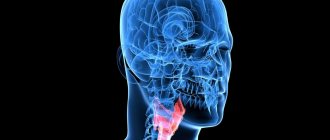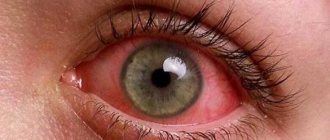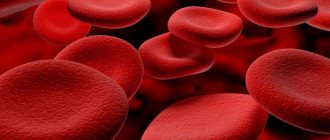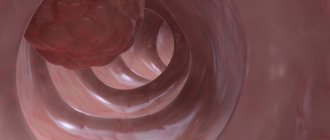Definition
Streptococcus agalactiae in men (or otherwise streptococcus agalactia) is a conditionally pathogenic bacterium belonging to the group of hemolytic streptococci. Normally, this microscopic organism is present in the human body in small quantities, but does not cause disease and does not threaten health in any way.
The genus of streptococci today includes over twenty species of bacteria. One part of these microscopic creatures are representatives of healthy human microflora, while the other causes diseases. The bacteria themselves are microscopic in size, they have a spherical shape, they survive for quite a long time in dust, on various objects, they can tolerate low temperatures, and at a temperature of more than fifty-six degrees they die only after thirty minutes.
Diagnostic features
You need to prepare for the examination of the urethra. You will have to abstain from sex for at least one day.
The evening before, you need to take a shower, and before visiting the doctor, do not visit the toilet for two hours, so that urine does not wash away the microflora from the inner surface of the urethra. Already in the doctor’s office, you will need to wipe the penis with a sterile napkin so that streptococci from the skin do not get into the biomaterial.
The contents of the urethra are removed with a special device, inserting it into the genitourinary canal. The healthcare worker will make several turns with the probe, and the collected material will be placed on a glass slide or in a special container.
The procedure causes unpleasant but tolerable sensations. In many ways, its comfort depends on the qualifications of the health worker and the condition of the urethra. If inflammation is present, the pain will be significant, since the infection has already damaged the mucous membrane.
This substance is obtained by massaging the prostate gland, after which the secretion flows down the urethra. The procedure and the analysis itself are simple, but they help identify bacterial prostatitis and prescribe adequate treatment.
Pathogenic organisms
Types of streptococcus that can end up in the urethra and other parts of the male genitourinary tract:
- Mitis is an opportunistic microorganism found in the urethra of 25% of men .
- Agalactiae is a group D microorganism, atypical for men , but often detected in women.
- Anginosus is a representative of the normal microflora of the oral cavity. When it enters the urethra, it multiplies rapidly and becomes the cause of infection, sometimes purulent.
Agalactia, along with other microorganisms, is transmitted from woman to man. The reverse process is also possible, when a man, a carrier of streptococcus, transmits the infection to a woman.
There are more than 100 different types of microbes in the genus Streptococcus. Some of them are representatives of opportunistic microflora, the other part provokes disease (streptococcal infection). The microorganisms themselves are characterized by microscopic size, spherical shape, and tolerate low temperatures well. In the absence of complaints, streptococcus in men is not a sign of a pathological process.
Causes of Streptococcus agalactiae in men
Streptococcal infection is caused by bacteria of this group, which are capable of destroying red blood cells, causing an inflammatory process in the human body. Streptococcus agalactiae can cause trouble in men for exactly the same reasons as in women.
To a greater extent, everything, as a rule, directly depends on hormonal levels, as well as on the human body’s ability to resist infection. The main danger to human health during the development of streptococcal infection are poisons with toxins that are released by pathogenic microorganisms during reproduction. The pathogen can enter the male body in the following ways:
- The parasite can be transmitted by eating contaminated foods.
- Penetration often occurs against the background of intimate contact. The sexual partner who transmits the infection may be a carrier or an infected person. Streptococcus can actively multiply in the vagina of women, and during intimate contact, pathogens enter the male genital organ. Streptococci can also multiply in the urethra.
- In a nutritional way. Infection often occurs due to violation of personal hygiene rules. Streptococci from the rectum enter the genitals.
- The pathogen can enter the body during a dental examination or surgical intervention, if these are carried out using instruments that have not undergone the necessary disinfection.
- If the infection in your interlocutor is localized in the respiratory tract, you can become infected by kissing, sneezing or coughing (saliva should get onto the skin or into the respiratory tract of a healthy person).
- Household way. Streptococci can live for a long time on various surfaces. Therefore, you can become infected if you use household items (dishes, towels, linen) of the patient.
Researching
For analysis of Streptococcus agalactiae in men, as a rule, the following biological materials are taken:
- Oropharyngeal smear (for diseases of the upper respiratory canals).
- A smear from the urethra (for pathologies of the genitourinary system).
- Examination of nasal sputum.
- Taking a scraping of the skin surface (with the development of erysipelas).
The following studies are also being conducted:
- Donation of blood and urine.
- Biochemical blood test.
- Carrying out bacteriological culture.
- Ultrasound examination of internal organs.
- Carrying out chest radiography and electrocardiography.
Therapy methods
Treatment of Streptococcus agalactiae in men is reduced to the destruction of its source. The course of treatment for streptococcus is usually based on the use of antibiotics of the penicillin group, as well as drugs that strengthen the immune system. During the treatment period, it is recommended to eat right, reduce physical activity, lead a healthy lifestyle and maintain hygiene.
For the general treatment of Streptococcus agalactiae in men, Benzylpenicillin, Phenoxymethylpenicillin, Amoxicillin, Augmentin, Azithromycin, Cefuroxime, Ceftriaxone, Cefotaxime, Clarithromycin and Erythromycin are used. As part of local therapy, Bioparox, Shexoral or Chlorhexidine are used. Any prescriptions are carried out by a doctor; self-medication is not recommended.
Treatment
Streptococcus continues to maintain good sensitivity to penicillin antibiotics. However, it is recommended to use a combination of drugs from two pharmacological groups for the treatment of genital infections. Preference is given to aminoglycosides and macrolides, adding to them an antibiotic of the penicillin group indicated in such cases.
Another therapeutic area of treatment is the restoration of microflora. This requires the administration of prebiotics and probiotics.
Prebiotics include preparations containing waste products of beneficial microorganisms, for example, Hilak forte. This is necessary to create favorable conditions for the reproduction of representatives of beneficial flora, while simultaneously preventing the vital activity of pathological microorganisms.
Probiotics contain microorganisms that inhabit natural loci. They help normalize the pH of the mucous membrane of the genitourinary system, produce B vitamins, and prevent the colonization of the intestines and other biocenoses by pathogenic microorganisms. These are products such as Linnex, Laktovit forte.
Prescribing nonsteroidal anti-inflammatory drugs will help overcome the symptoms of general intoxication, local swelling, and redness. Urination becomes painless, burning or itching disappears.
To quickly eliminate local phenomena, it is necessary to prescribe baths with antimicrobial drugs and anti-inflammatory herbal decoctions. Sexual contact should be avoided throughout the entire period of treatment. This is necessary to ensure the effectiveness of therapeutic measures and also protects against secondary infection.
Detoxification of the body
In men, Streptococcus agalactiae group B (group B) is rarely detected. Basically, it is found in newborns, pregnant women and women in labor, causing severe illness in all cases (especially in infants). Men can get it through sexual contact. These bacteria poison the male body with various poisons and enzymes that are products of their vital activity. These elements complicate the course of the disease and also cause a considerable number of unpleasant manifestations.
To remove bacterial toxins from the body, you need to drink a lot of liquid (about three liters per day), rinse the oropharynx with a solution of furacillin, or a weak salt solution is also suitable. Among the drugs for removing pathogens from the body, “Atoxil”, “Albumin” and “Enterosgel” can be distinguished.
Normal Streptococcus agalactiae in men
The doctor gives a referral for microbiological culture and study of the microflora of the genitourinary canals in men if symptoms of irritation occur in the urethra. Representatives of healthy male microflora are: streptococci, peptococci, micrococci, bacillary microorganisms, staphylococci and lactobacilli.
The number of each type of microorganism within the normal range may indicate the health of the male genitourinary system. If the analysis showed that Streptococcus agalactiae is contained in an amount of 10 to 4 CFU/ml, this is normal. The appearance of pathogenic microscopic organisms or a significant increase in the number of any of the participants in the biocenosis indicates disruptions in immunity or disease.
A smear is taken after special preparation using a sterile swab. It is delivered to the laboratory no later than two hours from the moment the analysis is taken. The largest proportion in the normal composition of male microflora is peptococcus, which is also a streptococcus, but does not have any pathogenic properties. As a result of analysis, it can count the number of colony-forming units up to ten to the fifth power of the total number of microscopic organisms.
The absence of pathogenic representatives of gonococcus and Trichomonas in combination with the presence of normal representatives in acceptable proportions indicates the absence of dysbacteriosis and a good state of immunity.
What does Streptococcus agalactiae mean in a smear in men?
When does a smear indicate a streptococcal infection?
If a smear contains a higher level of streptococcus than normal, and against this background there are additionally symptoms of irritation and suppuration, then it can be assumed that a streptococcal infection has arisen in the body. The previously mentioned peptococci are analogues of lactobacilli of normal female biocenosis. Peptococci in men are also streptococci, which help restore the body and maintain normal acidity levels.
An increase in the number of streptococci of other species (including pathogenic ones) indicates the presence of a source of infection or an inflammatory process directly in the organ under study. The causes of streptococcal agalactia in a smear from the urethra in men, as noted earlier, are weakened immunity, poor hygiene, and sexual intercourse with a sick partner.
The development of foci of chronic infections in the body, for example, pharyngitis, can provoke diseases that streptococcus causes in adults in various organs or systems. This can especially manifest itself when the immune system is weakened due to hypothermia, hypovitaminosis, diabetes mellitus, or hypothyroidism.
A frivolous attitude to the choice of a sexual partner and to personal hygiene often leads to the fact that streptococcus begins to actively multiply in the male genitals and in the urethra. The patient's smear in this case will indicate streptococcus as the leading microorganism.
Antibacterial drugs kill not only pathogenic bacteria, but also beneficial ones. Therefore, the use of antibiotics during the treatment of infectious pathologies of any localization must be combined with probiotics, antifungals and prebiotics. Contact with the mucous membrane of the causative agent of sexually transmitted infections also leads to impaired immunity, and at the same time to additional contamination with streptococci.
What does Streptococcus agalactiae mean in men 10 to 6 degrees? More on this later.
Prevention
Preventive measures come down to basic recommendations that can protect against infection by an infectious agent and its reproduction in the body:
- Avoid contact with sick people.
- Treat all diseases in a timely manner, preventing them from becoming chronic.
- Maintain hygiene, ventilate the room, and regularly carry out wet cleaning.
- Avoid hypothermia of the body.
- Eat healthy foods rich in vitamins and minerals.
- Eliminate bad habits.
- Try to avoid stressful situations.
- Disinfection of the room where the patient was.
- In case of skin damage, treat with antiseptic solutions.
Streptococcus is a common microorganism that can exist without causing harm. However, with a weakened immune system, it actively multiplies and brings many serious health problems, including death. The appearance of pathological symptoms and dysfunction of the body should be the reason for an immediate trip to the doctor.
Metastatic abscesses
. Representatives of the Streptococcus milleri group usually colonize the oral and intestinal mucosa. At the same time (getting into the bloodstream) they can cause a generalized infection and cause the development of abscesses of the brain, lungs or liver.
Streptococci
This group is often isolated as part of the pathogenic flora during mixed infections. When isolating representatives of the S. milleri group from a patient, it is necessary to conduct an examination to identify abscesses that occur without a characteristic clinical picture.
Infective endocarditis
. a-Hemolytic streptococci (S. suis, S. oralis and S. mitis) are representatives of the normal microflora of the intestines and oral cavity. Often cause infective endocarditis.
Infection can occur after dental procedures
. Since there are usually no significant symptoms of the disease, people at risk (for example, patients with pathological heart valves or those with artificial heart valves who are candidates for dental procedures) are recommended to receive preventive treatment. Bacteremia and endocarditis caused by S. bovis occur against the background of intestinal cancer. Sometimes endocarditis is caused by variant pyridoxine-dependent strains of streptococci.
Other gram-positive cocci
. In some cases (especially in people with reduced immunity), gram-positive cocci such as Leuconostoc and Pediococcus can cause infectious diseases.
Alloiococcus otitidis
- a slow-growing gram-positive coccus that produces lactic acid and causes chronic otitis media (with effusion) in children. The pathogen is characterized by pronounced antibiotic resistance (isolated by culture of ear effusion, even after antimicrobial therapy).
Why does streptococcus appear in men's urine?
The normal content of Streptococcus agalactiae in the urine in men is 10 to 4 CFU/ml. An increased concentration of bacteria in urine is detected in the presence of infection or due to incorrect collection of biological material. The pathogenic pathogens under consideration actively begin to develop during periods of weakened immunity, while the patient is under stress or as a concomitant disease.
Such colonies are very often localized within the intestines, throat or genitourinary system. Streptococcus agalactiae in the urine of men is detected in concentrations in pathologies of the urinary tract, which arise as a primary disease or are concomitant with other ailments.
Thus, a high concentration of such bacteria in a urine test may indicate the presence of a streptococcal infection in the male body. The pathogen causes a number of serious diseases that affect many organ systems. Illnesses caused by this microorganism cause discomfort to the patient. In some cases, they can even threaten life.
Complications
Infections caused by Streptococcus pyogenes are often severe and accompanied by various complications.
The primary consequences of streptococcal infection - otitis media, sinusitis, lymphadenitis - may appear a few days after recovery.
Severe complications of streptococcal infection:
- Rheumatic carditis - accompanied by shortness of breath, heart rhythm disturbances, swelling of the lower extremities, dizziness, the temperature periodically rises to subfebrile levels. Without timely treatment, heart defects develop, which can cause disability or death.
- Rheumatic fever – joint pain, the skin in the inflamed area becomes red and swollen.
- Rheumatic chorea is a disease that predominantly develops in children and adolescents and is characterized by damage to brain tissue. Symptoms are involuntary twitching of the muscles of the face and limbs, problems with coordination, speech, insomnia, mental and behavioral disorders.
- Glomerulonephritis is a renal pathology. The temperature rises sharply, there is pain in the lower back, swelling appears, and the daily amount of urine decreases.
Dangerous complications of streptococcal infection develop 2-4 weeks after tonsillitis and scarlet fever.











